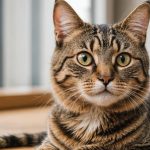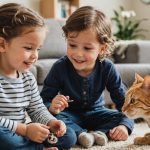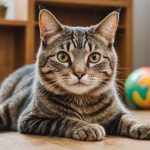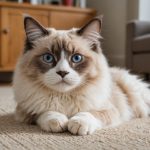Understanding FIV and FeLV
When discussing feline health, understanding both Feline Immunodeficiency Virus (FIV) and Feline Leukemia Virus (FeLV) is crucial. These are among the most common feline diseases affecting cat health. While these viruses lead to compromised immune systems, their impacts are varied, often affecting behavior and overall well-being. FIV primarily spreads through bite wounds and often remains dormant before presenting symptoms. Meanwhile, FeLV can transmit via blood, saliva, and even nose secretions, significantly impacting the gastrointestinal and respiratory systems.
Common symptoms of both FIV and FeLV can include weight loss, persistent fever, lethargy, and recurrent infections. Cats may also exhibit changes in behaviour due to these ailments, such as reduced social interaction and lack of energy. This makes regular monitoring of your pet’s health vital.
Also read : Ultimate pet owner”s handbook: spotting and handling cat allergies effectively
To support cats affected by FIV and FeLV, enrichment becomes essential. Engaging activities help improve their quality of life, offering emotional and physical stimulation, which is beneficial in keeping them mentally sharp. Providing safe, indoor enrichment and structured play sessions can greatly enhance their well-being. Activities that accommodate lower energy levels while still providing stimulation are especially important. Remember, enrichment isn’t just about play; it’s a holistic approach to support their medical and emotional needs.
Safe Indoor Enrichment Activities
When dealing with sensitive cats, particularly those affected by FIV and FeLV, choosing the right indoor enrichment is essential. Low-energy play ideas allow your feline friend to participate without becoming overtired. Opt for activities involving gentle interactions, such as feather teasers or mouse toys dragged slowly.
In the same genre : The comprehensive handbook for introducing cats to homes with young children: essential tips for fostering a harmonious environment
Interactive toys can play a pivotal role in maintaining your cat’s interest and encouraging physical activity. Toys like laser pointers and motorized balls offer engaging experiences without requiring intense effort. These toys stimulate the cat’s natural hunting instincts, providing mental stimulation and aiding in overall cat health.
Structured play sessions benefit your pet by establishing a routine, crucial for cats’ sense of security. Planning particular times for play introduces a sense of anticipation and excitement. Consistency in these sessions helps foster trust and allows you to monitor any changes in their behavior or energy levels.
By understanding how to integrate indoor enrichment effectively, you enhance your cat’s quality of life, making it more enjoyable and healthful despite the challenges posed by feline diseases like FIV and FeLV. Remember that each activity should cater to their individual needs and comfort levels, ensuring not only safe play but also behavioral improvement.
DIY Enrichment Ideas
Incorporating DIY cat toys into your feline’s routine can be a rewarding way to support both their physical and mental health. Simple homemade toys can keep your cat engaged without breaking the bank. A classic option is creating a wand toy using a sturdy stick, string, and colorful feathers. This encourages gentle play and simulates hunting behaviors, essential for cat health.
Simple Homemade Toys
For those inclined to creative enrichment, crumple a piece of paper into a ball to mimic small prey. Alternatively, fabric scraps tied together with a small bell can become an instant favorite. These playful items are not only safe but promote activity with minimal exertion, important for cats affected by feline diseases like FIV and FeLV.
Puzzle Feeders and Treat Dispensers
Turning meal times into engaging home activities is possible using puzzle feeders. Cut small holes in a plastic bottle for treats to escape when nudged. This interactive feeding strategy not only stimulates mental faculties but also slows eating, an added benefit for digestion and weight management.
Utilizing Household Items
Additionally, everyday items can be effortlessly transformed into feline amusement. Empty cardboard boxes with door cutouts offer both shelter and exploration, while paper bags turned inside-out make for enticing hide-and-seek venues. These low-cost ideas ensure safe play, ultimately enhancing your cat’s enrichment and feline well-being.
Creating a Stimulating Environment
Crafting a stimulating environment is essential for enhancing cat habitats and supporting indoor stimulation. Cats flourish in dynamic settings where they can explore different textures and spaces. Incorporating a variety of textures—from soft rugs and scratchable surfaces to smooth floors—engages their senses and prevents boredom. These diversities are not just visually pleasing but also provide necessary sensory stimulation.
An often-overlooked aspect is the use of vertical space. Many cats have a natural inclination to climb, so adding tall cat trees, shelves, or perches encourages indoor stimulation. These elevated spaces not only satisfy their climbing instincts but offer safe vantage points, fostering a sense of security.
Integrating foliage like non-toxic plants can enrich their environment as well. Plants introduce interesting smells and intricate textures, enhancing the sensory experience and offering a more dynamic space. Arranging hidden spots, such as cozy caves or tunnels created from safe materials, provides hiding areas—satisfying their need for secluded retreats.
These elements combine to create an enriching environment that caters to cats’ natural behaviors. The key is variety and adaptability, allowing your feline friend to enjoy a fulfilling and engaging lifestyle indoors. This multi-faceted approach to environment enrichment can significantly impact your cat’s overall well-being.
Social and Sensory Engagement
Engaging your cat in social interactions is vital for strengthening bonds and supporting their mental health. Regular, gentle human interaction helps cat socialization, reducing loneliness and the anxiety often associated with feline diseases such as FIV and FeLV. Keep these sessions soothing and predictable to ensure they remain enjoyable and stress-free.
Incorporating sensory activities like scent trails and exploring new smells can further enrich your cat’s environment. Cats have a refined sense of smell, and introducing safe, intriguing scents stimulates their curiosity. To create a scent trail, briefly rub a cloth on safe plants like catnip or mint and let your cat explore. This activity not only entertains but also diversifies their sensory experience.
Calming sounds can also play a role in reducing stress and promoting relaxation. Playing gentle music or nature sounds at a low volume helps soothe cats, particularly if they’re sensitive to the noises of daily life. Adjust the volume and type of sound to see which your cat responds to best.
These activities, incorporating both social and sensory elements, enhance cat health by fulfilling their fundamental needs for interaction and stimulation. Always tailor engagements to best suit your cat’s unique personality and comfort levels, ensuring both safety and enjoyment.
Monitoring and Adapting Activities
In caring for feline health, especially in cats affected by feline diseases like FIV and FeLV, monitoring and adapting your approach to enrichment is key. Recognising signs of overstimulation or fatigue helps ensure activities remain beneficial. Cats may exhibit changes in behaviour, such as unease or retreat, if overwhelmed by an activity. Carefully observe your cat’s reactions during enrichment to discern comfort levels.
Adapting activities according to individual needs enhances their experience. Each cat has unique preferences and stamina, which calls for personalised adjustments. If a particular toy or game seems too taxing, tailor the intensity or duration to match their energy levels. For FeLV or FIV affected cats, gentle, low-energy activities can be especially soothing.
Keeping a diary of your cat’s preferences and reactions can provide valuable insights into their behaviours and interests. Note which activities maintain their engagement and which might introduce new triggers. Adjusting the enrichment strategy based on these observations can lead to a more enjoyable and supportive routine. Enrichment monitoring not only boosts the cat’s quality of life but also helps in practicing vigilant care towards their needs, ensuring a harmonious balance between play and rest.











